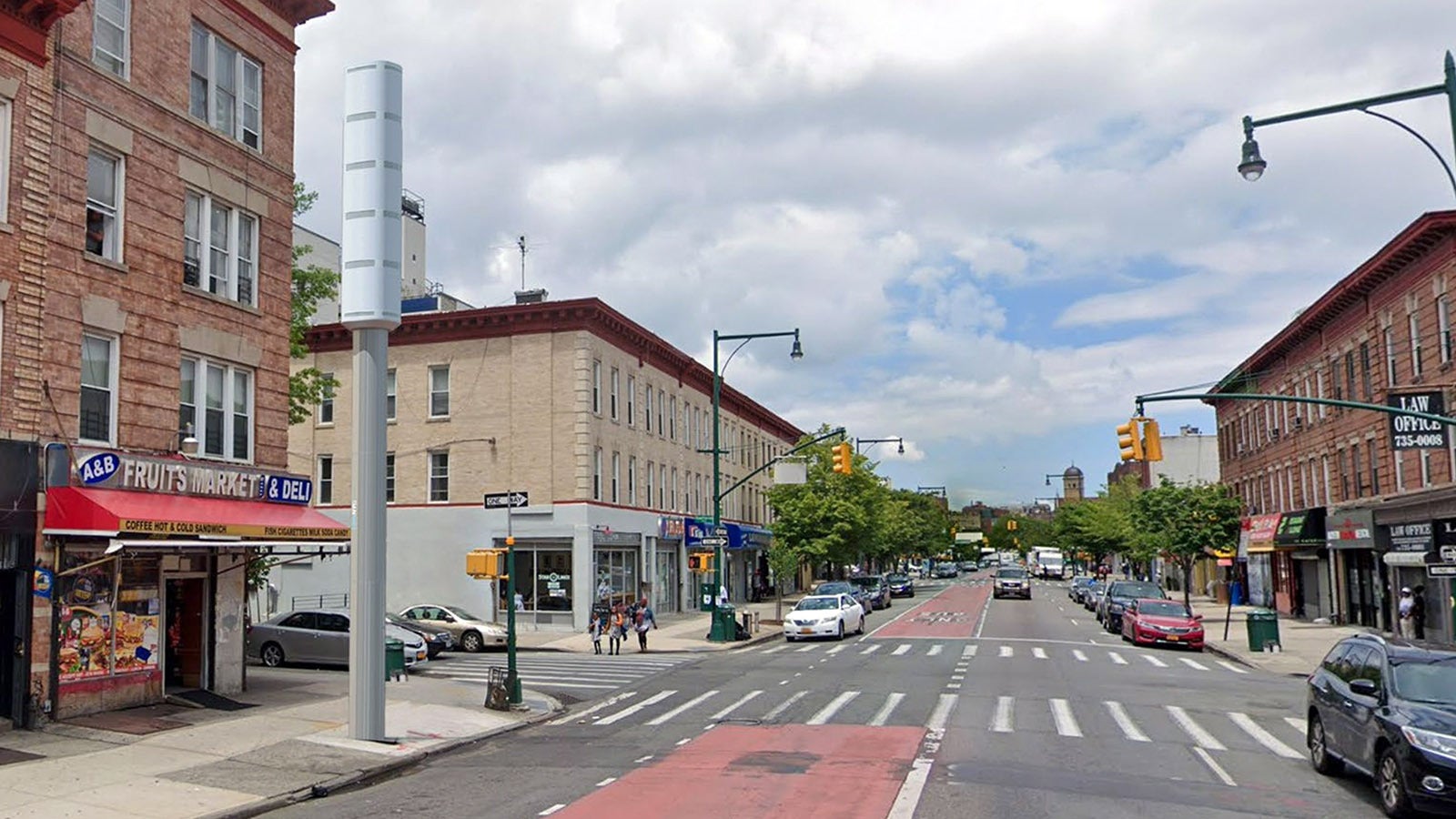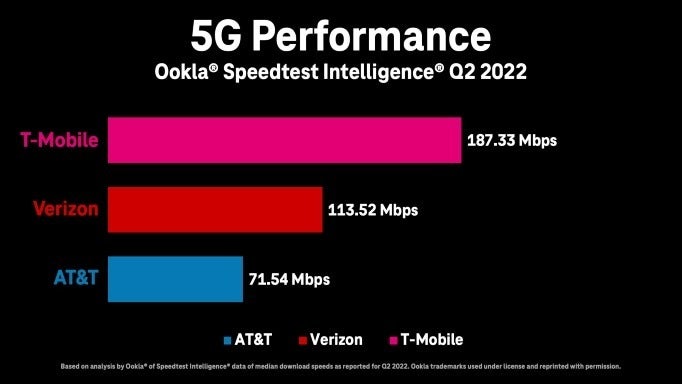T-Mobile blankets all New Yorkers with fast 5G so the city's Link5G towers were 'pointless'

'Good-Bye Pay Phone, Hello Link!' That is the tagline of the New York City-commissioned Link5G towers, courtesy of the public-private partnership CityBridge that brought New Yorkers the lovely electronic billboards of the LinkNYC project.
"Since its inception in 2014, CityBridge has partnered with NYC to embark on an ambitious, first-of-its-kind plan to create the largest and fastest free public Wi-Fi network in the world," waxes poetic the company's mission, all the while the 200 Link5G towers it erected across New York currently eschew their key purpose.
Build it and they won't come
"CityBridge's mission is to provide NYC residents and visitors with free and equitable access to connectivity, information, and wireless services across the 5 boroughs," adds the company in its mission statement.
While financed by the prospective franchisee, rather than the City Council, however, the Link5G towers are big and hulking, obstructing the view for many residents, unlike the fun little electronic billboards LinkNYC has been placing on sidewalks since 2016.

Link5G tower commissioned in Brooklyn | Image credit – LinkNYC
Granted, the Link5G towers are still a more elegant solution than similar undertakings in other cities, yet most of them now sit empty and largely devoid of carrier 5G equipment, with only 2 of 200 having any installed. According to a CityBridge spokesperson, the towers serve other vital connectivity purposes, too:
Link5G smart poles provide critical broadband infrastructure for cellular carriers to meet rising demands for reliable, high-speed connectivity citywide. The program is vital to ensure that New York City residents and businesses alike can stay connected and remain economically competitive in the decades ahead. We are committed to the expansion of free Wi-Fi and 5G service for all New Yorkers — particularly those in underserved communities — at no expense to the city.
CityBridge, July '24
They are also supposed to bring income to the city in exchange for the permits by sharing a percentage of the advertising and other revenue received by their franchisee, such as rents for carrier 5G equipment. The agreement was so far from reaching the CityBridge consortium's lofty revenue goals, however, that before the Link5G tower deployments the annual due amount was revised down to the $3 million it can meet with actually renting out tower space to carriers.
One engineering and computer science professor at Columbia University spoke for the Gothamist to express their bewilderment about the whole undertaking:
Building those on spec seems kind of pointless, or risky at least. Why would you not have tenants in place before you start breaking ground on one of these devices, especially since they're not particularly popular?
Henning Schulzrinne, July '24
Still, CityBridge reminds us that the key deliverables of the project are being met:
- Link5G is critical to the City’s efforts to drive digital equity, especially in the wake of the end of the ACP
- Franchise Agreement active until 2030
- 173 Link5Gs citywide
- 159 above 96th Street and in the outer boroughs (~91.9%)
- 14 below 96th Street in Manhattan, in LES, an equity district (~8%)
- 76% support Link5G in their community (HarrisX poll from 2023)
- 46% of New Yorkers experience dropped phone calls once a month
- 69% of New Yorkers without home internet service rely on cellular networks to access the internet at home
- 3M+ feet of neutral fiber installed to support LinkNYC citywide
- Completely free to users and taxpayers; always has been and always will be
- Over 16M Wi-Fi subscribers
- Over 30M free phone calls made
- Majority of calls to EBT hotline (8K times per month)
- 311 dialed over 1K times per month
- 911 dialed over 6K times per month
- $682 million in labor income
- $1.2 billion in economic activity
- $119 million in revenue paid to the City of New York
- 2,000+ small and local businesses provided free advertising through LinkLocal
- 16 Link5Gs are in residentially zoned areas
T-Mobile begs to differ on 5G in NYC communities
Armed with the Link5G 1% carrier usage ration, we probed T-Mobile over its exact 5G coverage numbers for the New York City area. It turns out that the Un-carrier's 5G coverage, which is currently America's fastest and most reliable network, reaches nearly every New Yorker across the 5 boroughs anyway, as per T-Mo's engineering stats:
- In-building commercial 5G coverage: 97.6% of people covered with T-Mobile 5G in commercial buildings
- In-building residential 5G coverage: 98.7% of people covered with T-Mobile 5G in residential buildings
- In-vehicle 5G coverage: 99.6% of people driving through the boroughs are covered with T-Mobile 5G
- Outdoor 5G coverage: 100% of outdoor areas in the boroughs are covered with T-Mobile 5G (98% with 5G UC)
Granted, this is the whole network reach that includes the 5G Extended Range coverage on the low-band 600MHz spectrum that T-Mobile started deploying even before its merger with Sprint brought it the mid-bands that have formed the basis of its award-winning 5G efforts.
The 5G Extended Range offers only about 20% speed improvements over the 4G LTE network speeds before it, and might not meet the FCC's new 2024 broadband Internet speeds definition everywhere:
In addition to deployment, the Report considers broadband affordability, adoption, availability, and equitable access, when determining whether broadband is being deployed in a reasonable and timely fashion to “all Americans.” The Commission’s Report, issued pursuant to section 706 of the Telecommunications Act of 1996, raises the Commission’s benchmark for high-speed fixed broadband to download speeds of 100 megabits per second and upload speeds of 20 megabits per second – a four-fold increase from the 25/3 Mbps benchmark set by the Commission in 2015.
– FCC March 14 '24
When the City of New York commissioned the Link5G towers two years ago in the aftermath of the pandemic's remote learning connectivity conundrum, however, the broadband Internet definition was much more lenient, so even T-Mobile's Extended Range 5G would've covered the FCC's requirements by a large margin.

T-Mobile's 5G network speeds at the time meet and exceed the federal 25 Mbps broadband threshold several times | Image credit – T-Mobile via Ookla
This is the overall 5G coverage speeds across the nation, but even for New York City, in particular, it was precisely T-Mobile that was awarded the fastest network provider with median 117.61 download and 13.71 upload speeds then, too.
Long story short, it seems that there hasn't been much practical use for the Link5G towers that the City of New York commissioned with the explicit purpose to level the playing field in low-income neighborhoods in terms of broadband Internet connectivity, at least not where T-Mobile is concerned. Carriers have had cheaper and thus more preferred options to install their equipment on commercial or residential rooftops, billboards, placed higher than with the Link5G towers that on top of that stick like a sore thumb in residential communities.
Granted, some residents have come to appreciate the free Wi-Fi, city services' tablet access, or charging outlets the Link5G towers provide, but the actual 5G part of the equation is seemingly not going to be realized any time soon.










Things that are NOT allowed: